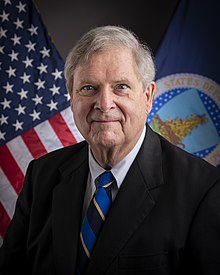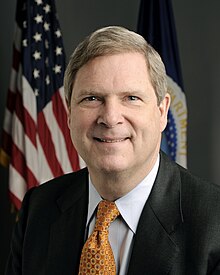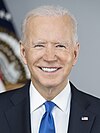
George Ervin "Sonny" Perdue III is an American politician, veterinarian, and businessman who served as the 31st United States secretary of agriculture from 2017 to 2021. A member of the Republican Party, he previously served as the 81st governor of Georgia from 2003 to 2011 and as a member of the Georgia State Senate from 1991 to 2002.

Michael Owen Johanns is an American attorney and politician who served as a United States senator from Nebraska from 2009 to 2015. He served as the 38th governor of Nebraska from 1999 until 2005, and was chair of the Midwestern Governors Association in 2002. In 2005, he was appointed by President George W. Bush to serve as the secretary of agriculture, where he served from 2005 to 2007, becoming the fourth Nebraskan to hold that position.
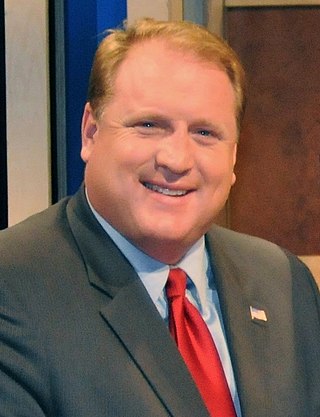
Chester John Culver is an American politician who served from 2007 through 2011 as the 41st governor of Iowa. A member of the Democratic Party, he had previously served as the 29th Secretary of State of Iowa from 1999 to 2007. He was elected governor in the 2006 Iowa gubernatorial election and ran unsuccessfully for reelection in 2010, losing to former governor Terry Branstad.

Sherrod Campbell Brown is an American politician serving since 2007 as the senior United States senator from Ohio. A member of the Democratic Party, he was the U.S. representative for Ohio's 13th congressional district from 1993 to 2007 and the 47th secretary of state of Ohio from 1983 to 1991. He started his political career in 1975 as a state representative.
The Iowa Democratic Party (IDP) is the affiliate of the Democratic Party in the U.S. state of Iowa.
The 2008 presidential campaign of Tom Vilsack, the 40th Governor of Iowa began on November 30, 2006, when he announced his entry into the Democratic primaries. Vilsack had previously been considered as a potential running mate for John Kerry in the 2004 election. On February 23, 2007, before the commencement of the primaries, Vilsack dropped out of the race, due to fundraising shortfalls, a low standing in national polls and a lack of name recognition. He endorsed Senator Hillary Clinton after his exit, but shifted to Barack Obama after her withdrawal.

Marcia Louise Fudge is an American attorney and retired politician who served as the 18th United States Secretary of Housing and Urban Development from 2021 to 2024. A member of the Democratic Party, she served as the U.S. representative for Ohio's 11th congressional district from 2008 to 2021. The district included most of the black-majority precincts between Cleveland and Akron.

Barack Obama assumed office as the 44th president of the United States on January 20, 2009, and his term ended on January 20, 2017. The president has the authority to nominate members of his Cabinet to the United States Senate for confirmation under the Appointments Clause of the United States Constitution.

Jonathan William Coppess was the administrator of the Farm Service Agency (FSA) of the Department of Agriculture, and was appointed on July 9, 2009, by Agriculture Secretary Tom Vilsack.

Shirley Sherrod is the Executive Director for the Southwest Georgia Project and Vice President of Development for New Communities at Cypress pond. Sherrod is a civil rights activist who has devoted most of her life advocating for farmers and rural residents. Sherrod has been the recipient of various praises such as; The Honorary Doctor of Humane Letters from Sojourner-Douglas College, being inducted into the Cooperative Hall of Fame, and awarded the James Beard Leadership Award.
On July 19, 2010, Shirley Sherrod was fired from her appointed position as Georgia State Director of Rural Development for the United States Department of Agriculture. Her firing was an administration reaction to media reports on video excerpts from her address to an event of the National Association for the Advancement of Colored People in March 2010 and commentary posted by conservative blogger Andrew Breitbart on his website. Based on these excerpts, the NAACP condemned Sherrod's remarks as racist and US government officials called on the official to resign. However, review of her full speech showed that the excerpts had been selectively edited, and that her remarks – understood in context – were about the importance of overcoming personal prejudices. The NAACP and White House officials then apologized for their earlier criticisms, and United States Secretary of Agriculture Tom Vilsack apologized for the firing and offered Sherrod a new position.

The 2014 United States House of Representatives elections in Iowa were held on Tuesday, November 4, 2014, to elect the four U.S. representatives from the state of Iowa, one from each of the state's four congressional districts. The elections coincided with the elections of other federal and state offices, including Governor of Iowa and United States Senate. Primary elections were held on June 4, 2014. As no candidate won more than 35% of the vote in the 3rd district Republican primary, that nomination was decided at a party convention on June 21.

The 2016 United States Senate election in Iowa was held November 8, 2016, to elect a member of the United States Senate to represent the State of Iowa, concurrently with the 2016 U.S. presidential election, as well as other elections to the United States Senate in other states and elections to the United States House of Representatives and various state and local elections.

This article lists potential candidates for the Democratic nomination for Vice President of the United States in the 2016 election. Former Secretary of State Hillary Clinton, the 2016 Democratic nominee for President of the United States, chose Senator Tim Kaine of Virginia as her running mate. The formal nomination took place at the 2016 Democratic National Convention. The Clinton–Kaine ticket ultimately lost to the Trump–Pence ticket in the general election, and Kaine returned to the Senate following the campaign.

The 2020 United States Senate election in Iowa was held on November 3, 2020, to elect a member of the United States Senate to represent the State of Iowa, concurrently with the 2020 U.S. presidential election, as well as other elections to the United States Senate in other states and elections to the United States House of Representatives and various state and local elections. Primaries were held on June 2.

The Iowa elections, 2018 were held in the U.S. state of Iowa on November 6, 2018. A closed primary election was held on June 5, 2018. All of Iowa's executive officers were up for election as well as all four of Iowa's seats in the United States House of Representatives, 25 (half) of the seats in the Iowa Senate, and all 100 seats in the Iowa House of Representatives.

Xochitl Liana Torres Small is an American attorney and politician who is the 15th and current United States deputy secretary of agriculture, acting as "chief operating officer" for the department. She was nominated by President Joe Biden in February 2023, and was confirmed by the senate on July 11.

Robert Farrell Bonnie is the current Under Secretary of Agriculture for Farm Production and Conservation, having been confirmed by the Senate on November 16, 2021, by a vote of 76-19. He previously served as Deputy Chief of Staff for Policy and Senior Advisor, Climate, in the Office of the Secretary in the United States Department of Agriculture. He was appointed on Jan. 20, 2021.
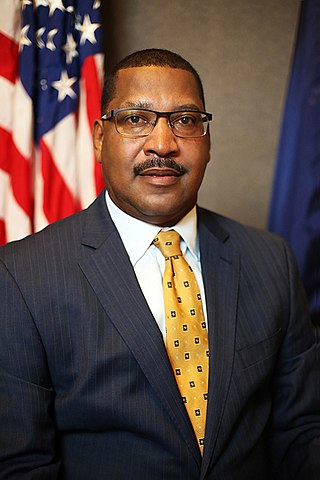
Homer Lee Wilkes is an American conservationist and government official from Mississippi. In 2021, Wilkes was nominated by President Joe Biden to serve as under secretary of agriculture for natural resources and environment.
